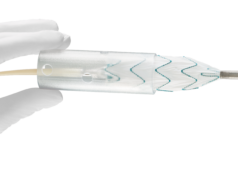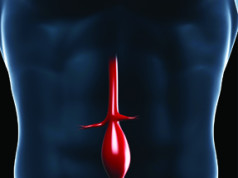
Paul Chrisp, the director of the Centre for Guidelines at the National Institute for Health and Care Excellence (NICE), spoke at the annual meeting of the Vascular Society for Great Britain and Ireland (VSGBI; 27–29 November) about what the institute does, and how they do it. Chrisp detailed the core principles of NICE, addressed the challenges they face, and considered the “bigger picture”, in keeping with the theme of the President’s Symposium during which he spoke—safe, sustainable vascular services for 2020 and beyond. While some delegates noted that the talk provided useful insight into the workings of the institute, many had specific questions and concerns regarding the draft guidelines for abdominal aortic aneurysm (AAA) repair, with one delegate remarking: “We still do not know”.
Chrisp began by outlining that NICE is “an independent organisation responsible for providing evidence-based guidance on health and social care in England”. He specified that they use evidence that is “relevant, reliable, and robust,” and also take into consideration many other factors, such as population benefits and value for money. “We ask our committees to produce guidance that will benefit the most people while also taking into account fairness and respecting individual choice and preferences,” going on to emphasise the challenges of balancing “all that complexity”.
Following the presentation, numerous delegates had questions and comments for Chrisp. Michael Jenkins (London, UK) remarked: “It was great to get a broader view of NICE,” especially give than the opinion of “many in the vascular community” has been “synonymous” with aneurysm draft guidelines over the last 18 months. He asked if Chrisp could give any “upfront knowledge” on any progress on the AAA repair guidelines.
Chrisp responded: “It takes time to get to a point where the committee is happy and satisfied, NICE is happy and satisfied, and you as clinicians and commissioners are able to take those recommendations and put them into practice,” concluding that “triangulating those three aspects is hard”.
The discussion largely focused on concerns surrounding the draft guidelines for AAA repair. Ross Naylor (Leicester, UK), for example, remarked that he has previously been involved in the process of putting together stroke guidelines, noting that “part of the problem we faced was that it is preferred that most of the evidence is based on randomised trials,” many of which are “very historical”. According to Naylor, NICE was described as a “spoilt child” in a comment made at VEITHsymposium (19–23 November, New York, USA) for not referring to modern evidence and instead relying “solely” on randomised trials. “NICE relies heavily on randomised trials but when [they] are so old, how do you move on?” Naylor asked Chrisp.
“We recognise that and we do use different types of evidence when it is appropriate to answer the question that is in front of us,” replied Chrisp, to which Naylor responded, “It does not always seem like that”.
Continuing with the theme of evidence, to which Chrisp referred many times during his presentation, Roger Greenhalgh commented on the importance of context: “think we should have the perspective that endovascular repair is a stage, a step towards the future,” urging NICE to “keep your minds open”.
“We always have open minds,” replied Chrisp, adding that NICE “always responds to significant changes in the evidence base” and that they update their recommendations in accordance with evidence changes.
One final comment to Chrisp considered possible variance between the decision of the patient and the physican on the one hand, and the recommendations of NICE on the other, to which Chrisp noted that “guidelines are not mandatory, however they do reflect what the committee think is the best evidence and they should be taken into account”.
President of the VSGBI, Ian Loftus, ended the discussion with a comment that NICE has been “very engaged” with the vascular community and has listened to their concerns and continues to do so. “We still do not know what the final outcome and wording [of the AAA guidelines] will be,” he added, addressing the fact that there is still the potential for change before the guidelines are published.













